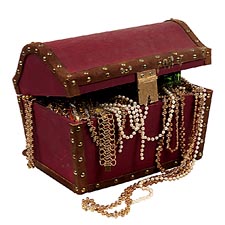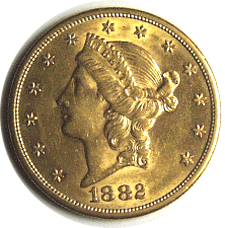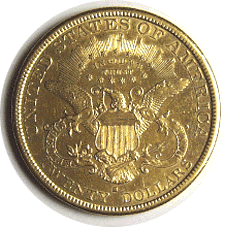|
FRESH STUFF DAILY |
|
|
||
|
|
||
|
|
||
|
SEE ALL SIGNED BOOKS by J. Dennis Robinson click here |
||
It is hard to keep a gold rush quiet. Despite repeated failure and skimpy evidence, treasure hunters insisted for decades that there was gold buried near Wentworth by the Sea Hotel in New Castle, NH. Searchers never found what they were looking for, the hotel found a lot more tourists. We can’t help wondering if there is a connection. Dig in.
READ: Much more on Wentworth by the Sea Few things fire human imagination more quickly than the two words 'buried treasure." Many years ago, this writer was in a small party, under the leadership of the late Lyman D. Rutledge, that went out to the Isles of Shoals simply to check out a rumor of buried treasure. Considering the ancient history of this region, there's plenty of cause to think Spanish doubloons may be turned up somewhere along the coast. However, there are none alive today who can remember a treasure hunt that went on between the Little Harbor Bridge, near the Wentworth Hotel, and the cottage of Charles E. Campbell.
The next week the Journal reported that another party of Boston men were working in the mud in the channel, seeking the treasure. This group was thought to be a crowd of claim jumpers. The Old Man's Treasure Map More detail was forthcoming the next week. According to the report, the parties made a contract with Mr. Thomas Simonds, a well known dredger who had been working on a government project in nearby Amesbury, Massachusetts. The article went on to reveal that information about the alleged treasure had came from an elderly New Castle resident. Before his death two years earlier, the man had alluded to a treasure map hidden in the lining of one of his vests. It would lead to three chests of gold, a barrel filled with silver and a box of coins. The newspaper article continued: "It is needless to say that the work which now begins under the direction of Mr. Simonds, will be watched with considerable interest by outsiders, and it is already hinted that if anything of real value is brought to light, law suits will result in order to determine on whose land or shore the prize was buried, and hence to whom it belongs." Apparently the treasure seekers ended their quest for the season with the onslaught of winter, and nothing more about them was reported until May 5, 1883, when they resumed operations. This time they brought down from Belfast, Maine, a professional dowser, whose divining rod played fantastic tricks over the same spot that other diviners had found. With that the Boston group was ready to push operations through the summer. If they found anything that summer, it was a better kept secret than operations by the CIA. Clergyman's Gold and Goat
"There has been more or less gossip for a long time in reference to a fabulous amount of money said to be buried in New Castle, Little Harbor. The story of the hidden treasure has, perhaps, for its foundation some facts; at least there are those who accept the visionary tale about buried treasure on our shore, and at different times within the past three years a systematic search for the still unfound gold has been instituted. Those most directly interested in the affair are very reticent when interrogated relative to the story. It is affirmed that many years ago a wealthy clergyman set sail from England, bringing along a large sum of money, which he proposed, as became his benevolent nature, to use in benefiting our fore- fathers in the name of his Creator." The article continues: "Those on board the vessel in which he embarked learned of the wealth on board, and resolved to have control of it. To attain this end the clergyman was forcibly put off the vessel and placed upon one of the Isles of Shoals, and bearing with him for companionship a goat. The crew sailed away, but on account of a severe storm was obliged to put into Little Harbor. How, why or when the gold was buried, or by whom, are points not made clear in the narrative as told to your correspondent. A chart showing the locality of the yet unearthed gold fell into the hands of a school teacher, who, while on a journey, was taken sick, and sought the hospitality of a family in a Maine town. His sickness proved a fatal one, and just before dying he informed his kind friends that he could only repay their kindness by presenting them with a chart which would indicate where much wealth was concealed, and stated that the chart was sewed up in the lining of his vest." The New York article goes on to pinpoint the treasure site: "The party who is now engaged in the search is A.J. Griffin, of Melrose. By marrying into the family, he came into possession of the chart in question, which located the money at one and a half miles below Portsmouth, on the west side of Newcastle Island, 25 rods below the bridge, 20 rods below Black Point at low water, where there is a rock 3 x 4 feet, with the formation of a windowsill on top; on the east side is a barrel of silver and on the west three chests of gold. There are two objects which the chart specifies that cannot be found, namely; the 3 x 4 foot rock and the bridge spoken of." "At the supposed spot where the chests and barrel are submerged, an excavation has been made 16 feet deep and 50 feet square. Divining rods have been used, which have only served to add to the uncertainty of the situation; but the holder of the chart is not discouraged, and firmly believes that the money is there. 'Further efforts will soon be made to unearth it. Judging from the amount of expense already incurred, the gold and silver will be eaten up in attempts to obtain it, if the effort is much longer continued." Is the Gold Still Out There?
Now, it must be understood that the present bridge doesn't come into play. The old abutments ran more off the late Walter Dunfey's Blunt Island, and there were at least three bridges preceding the present. Anyway, in April, 1886, it was reported that several men were "poking around" on the river side, near the Wentworth Bridge, Little Harbor. It will be noted that always the reference is upriver of the bridge. Over the past year or two the former Great Island Trust spent oodles of money blasting and dredging out a channel on the ocean side of the bridge. Today the only treasure to be found from that effort, is the fleet of costly yachts [and now costly condos as the hotel land has been sold off - editor's note] that float in the slips in the new marina. Again in 1900 it was reported that "a stranger has been working for two or three days with a divining rod in the vicinity of the Wentworth House bridge. Hope he will locate it, particularly if it is the long-lost treasure of Capt. Kidd. A few years ago, parties were in the same vicinity on a like divining, and this man was of the same company." Again, if the "treasure" was ever found, it's one of the best-kept secrets of the Seacoast. Perhaps it's time for some other "investors" to have a shot at finding it. All they have to lose is money.
ABOUT THE AUTHOR Edited by SeacoastNH.com from: "Rambles About Portsmouth" by Ray Brighton, Portsmouth Marine Society Press, Peter Randall Publisher, 1994. Reprinted with permission.
Please visit these SeacoastNH.com ad partners.
News about Portsmouth from Fosters.com |
| Friday, April 19, 2024 |


|
Copyright ® 1996-2020 SeacoastNH.com. All rights reserved. Privacy Statement
Site maintained by ad-cetera graphics

 Smuttynose Murders
Smuttynose Murders




 This story began to unfold in October, 1882, when the Portsmouth Journal reported that 'a party of Boston men had a diver at work at New Castle, searching for alleged treasures in the bed of the river lying nearly midway between the bridge leading to the Wentworth, and the island on which the Charles E. Campbell cottage was located. In its first account, the Journal said the searchers dragging the mud of Little Harbor were guided "by revelations made in a document in their possession, over one hundred years old, and whose authenticity is undoubted, the full contents of which the holders decline to disclose. The work of diving for the expected 'fortune' has been in quiet progress, off and on for several months, and is to be continued indefinitely, but the results thus far of the investigations at the bottom, are kept a profound secret."
This story began to unfold in October, 1882, when the Portsmouth Journal reported that 'a party of Boston men had a diver at work at New Castle, searching for alleged treasures in the bed of the river lying nearly midway between the bridge leading to the Wentworth, and the island on which the Charles E. Campbell cottage was located. In its first account, the Journal said the searchers dragging the mud of Little Harbor were guided "by revelations made in a document in their possession, over one hundred years old, and whose authenticity is undoubted, the full contents of which the holders decline to disclose. The work of diving for the expected 'fortune' has been in quiet progress, off and on for several months, and is to be continued indefinitely, but the results thus far of the investigations at the bottom, are kept a profound secret."
 Thanks to the efforts of the Reference Desk at the Portsmouth Public Library, the author has learned that A. J. Griffin was Dr. Alvah J. Griffin, a physician practicing in Melrose, Mass. in 1885. Unfortunately, that doesn't give a clue as to where he was able to get the funding for such extended searches of the mucky bottom at Little Harbor. And that leads to a befuddling question: Given that the crew who stole the minister's money wanted a handy repository for the same, would such people plant it where the tide ebbs and flows twice in 24 hours? It would seem more rational for the treasure to have been buried on the beach between the bridge and Campbell's cottage.
Thanks to the efforts of the Reference Desk at the Portsmouth Public Library, the author has learned that A. J. Griffin was Dr. Alvah J. Griffin, a physician practicing in Melrose, Mass. in 1885. Unfortunately, that doesn't give a clue as to where he was able to get the funding for such extended searches of the mucky bottom at Little Harbor. And that leads to a befuddling question: Given that the crew who stole the minister's money wanted a handy repository for the same, would such people plant it where the tide ebbs and flows twice in 24 hours? It would seem more rational for the treasure to have been buried on the beach between the bridge and Campbell's cottage.














